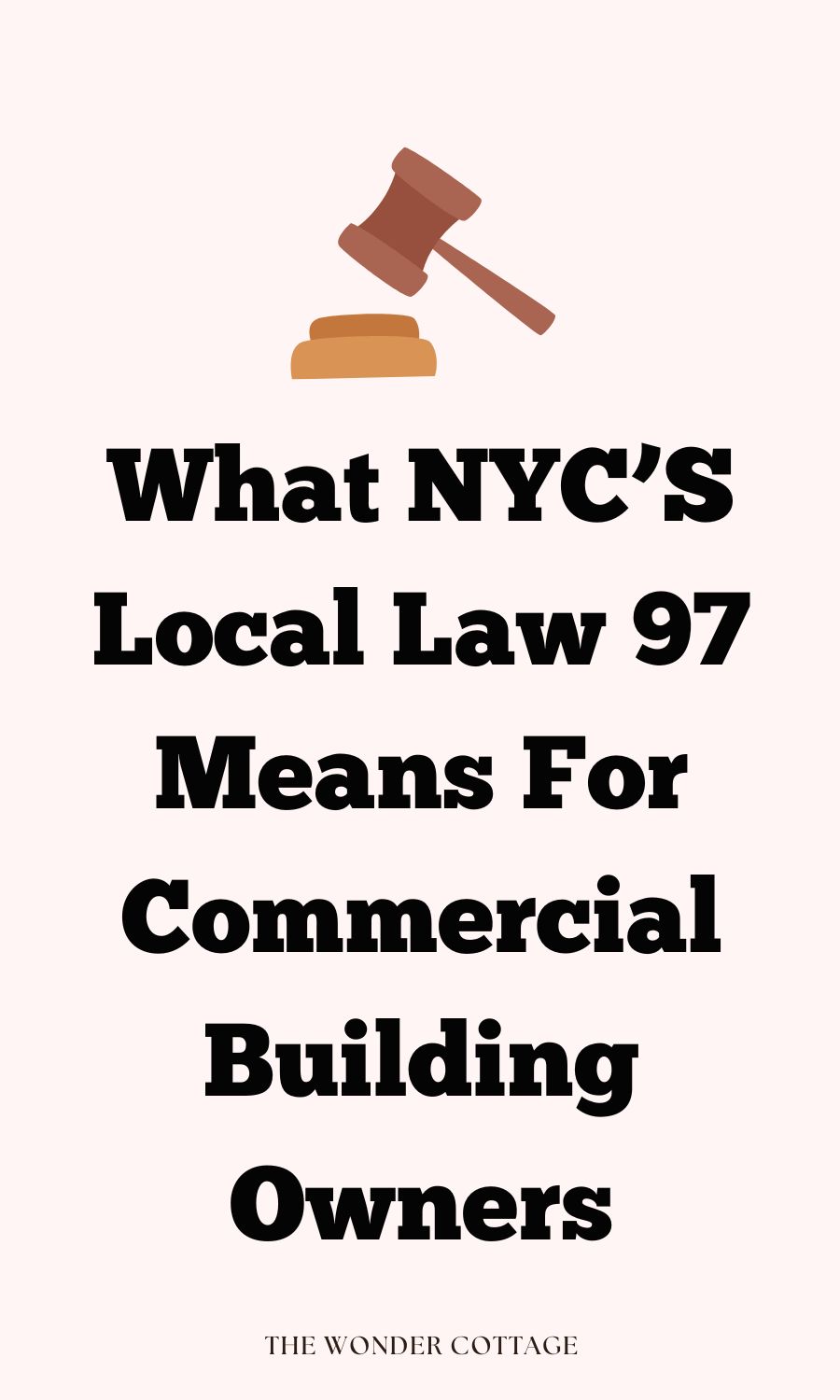You may be surprised to know that not only do buildings produce a large number of carbon emissions every day but also, they account for approximately two-thirds of New York city’s greenhouse gas emissions annually.
So, the responsibility for significant reductions in greenhouse gas emissions now falls to respective building owners.
With an aim to curb these greenhouse gas emissions, Mayor de Blasio (Former Mayor of New York City) pledged to acknowledge these emissions as a part of the plan to drastically reduce the city’s carbon emissions.

What is local law 97?
The City of New York Council on May 19, 2019, enacted Local Law 97 also known as LL97 as a part of the Climate Mobilization Act (CMA) to reduce citywide carbon emissions by 40 percent before 2030 and 80 percent by 2050.
As the centerpiece of CMA, this leading-edge law places carbon caps to regulate Greenhouse Gas (GHG) emissions from buildings that are larger than 25,000 square feet – approximately 50,000 residential including commercial properties within New York City. Also, any building which is less than 25,000 square feet in space is exempt from the law.
These caps begin in 2024 and will become more stringent over time, eventually reducing emissions by about 80 percent by the year 2050
This law is known to be the most ambitious building emissions legislation enacted by any city in the world and will apply to both commercial and residential, also new and existing buildings.
Since it sounds like more work and an expensive strategy, here is why it is still considered a “good thing” for the building owners in the long run
The thing is, local Law 97 gives building owners a motive, a reason, a cause to upgrade critical aspects of their infrastructure to not just comply with this law but also to make a better place, to serve better, and create structures that are ultimately longer-lasting, more energy-efficient and cost-saving.
This law introduces increasingly stringent limits on greenhouse gas emissions for covered buildings. Starting in 2024, buildings over 25,000 square feet with two or more buildings collectively exceeding 50,000 square feet will be required to comply.
Also, the law sets new emissions intensity limits structured into two initial compliance periods that will be 2024-2029 and 2030-2034 based on building code occupancy groups.
By May 2025, the buildings that are impacted by Local Law 97 will have to file an annual Greenhouse Gas Emission report which will tell if the building either complies with regulations or exactly how much it has exceeded the specified limits. Also, the building owners make sure that they have to file this report in May every year.
What will be the future requirements through 2050 are yet to be determined, however, it is estimated that emissions limits become significantly stricter with each five-year compliance period.
Who will be affected?
The law affects the buildings of the following types:
The City’s largest building which are 25,000 square feet or larger in size (both commercial and residential buildings) also includes (both new and existing buildings).
Multiple buildings on the same tax lot that have a combined size exceeding 50,000 sq. ft.
Multiple buildings that are owned by the same condo association and controlled/governed by the same board that has a combined size exceeding 50,000 sq. ft.
Also, it’s fundamental to remember that building owners are directly responsible for understanding whether their buildings are affected or not. And, if they are affected, assuring that they comply.
Related Posts
Who is exempt?
The buildings that are owned by the City (apart from senior colleges in the City University of New York system)
- If it is a place to worship (any religious place)
- If it is non-profit hospitals or healthcare facility centers.
- The Industrial buildings are used mainly to generate electricity.
- Rent-regulated housing or buildings (part of a federal housing program)
- Housing owned by (on land owned by) the New York City housing authority
- Housing Development Fund Corporation (HDFC) properties/projects
- Multi-family dwellings of three stories or lower, with no central HVAC or hot water system
Penalties – What happens if you don’t comply?
Buildings that exceed the maximum limit face harsh penalizations as Local law 97 will impose financial penalties for building owners that are not compliant with the law.
The penalties for Local Law 97 however depend on the type of building and its current emissions where a penalty of $268 is charged for every metric ton of CO2 that exceeds the annual building emissions limit. In this, the first limits apply in 2024-2029, and then more stringent limits apply in 2030-2034.
The fines include a penalty of $268/metric ton of CO2 and imprisonment for deliberately submitting false reports on the annual Greenhouse Gas Emissions.





